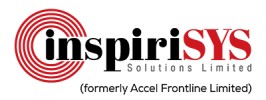i
Filter interviews by
Extio Technology and Consulting LLP Interview Questions and Answers
31 Interview questions
Performance testing focuses on speed, scalability, and stability of the system, while functional testing checks if the system meets specified requirements.
Performance testing evaluates the system's speed, scalability, and stability under various load conditions.
Functional testing verifies if the system meets specified requirements and functions correctly.
Performance testing helps identify bottlenecks and optimize ...
Common Performance Testing tools include JMeter, LoadRunner, Gatling, and Apache Bench.
JMeter: Open-source tool for load and performance testing
LoadRunner: Enterprise tool by Micro Focus for performance testing
Gatling: Open-source tool for load testing
Apache Bench: Command-line tool for benchmarking web servers
Factors for selecting Performance Testing tools include compatibility, scalability, ease of use, cost, and support.
Compatibility with the technology stack being used
Scalability to handle the expected load
Ease of use for testers to create and execute tests
Cost of the tool compared to the budget
Availability of support and documentation
Integration capabilities with other testing tools
Reporting and analysis features
Co...
LoadRunner is a performance testing tool used to simulate user traffic on a system to measure its performance under load.
Allows for performance testing of applications under various load conditions
Helps identify bottlenecks and performance issues in the system
Provides detailed reports and analysis of system performance
Supports a wide range of protocols for testing different types of applications
Endurance testing involves testing the system under sustained load to ensure stability, while spike testing involves testing the system's ability to handle sudden spikes in load.
Endurance testing is performed to evaluate the system's performance over an extended period of time.
Spike testing is conducted to assess how the system handles sudden increases in load or traffic.
Endurance testing helps identify memory lea...
Performance Testing includes Load Testing, Stress Testing, Endurance Testing, and Spike Testing.
Load Testing: Evaluates system performance under expected load levels.
Stress Testing: Tests system performance beyond normal capacity to identify breaking points.
Endurance Testing: Checks system performance over an extended period to ensure stability.
Spike Testing: Tests system's response to sudden spikes in load or tra...
Parameters considered for Performance Testing
Response time
Throughput
Concurrency
Load
Stress
Quality assurance focuses on processes to ensure quality, while testing involves executing tests to identify defects.
Quality assurance is a proactive process that focuses on preventing defects by establishing processes and standards.
Testing is a reactive process that involves executing tests to identify defects in the software.
Quality assurance is process-oriented, while testing is product-oriented.
Quality assuran...
A test case is a set of conditions or variables under which a tester will determine whether a system under test satisfies requirements or works correctly.
Test cases are written based on requirements or user stories
Each test case includes a set of inputs, expected outputs, and execution steps
Test cases are used to validate the functionality of a system
Test cases can be automated or executed manually
Load testing is a type of performance testing that simulates real-life user load on a software application to measure its performance under normal and peak conditions.
Load testing helps identify the maximum operating capacity of an application.
It helps in determining whether the current infrastructure is sufficient to handle the expected user load.
Examples of load testing tools include JMeter, LoadRunner, and Apac...
Extio Technology and Consulting LLP Interview Experiences
6 interviews found
I applied via LinkedIn and was interviewed in Nov 2023. There was 1 interview round.
(9 Questions)
- Q1. Differentiate between quality assurance and testing
- Ans.
Quality assurance focuses on processes to ensure quality, while testing involves executing tests to identify defects.
Quality assurance is a proactive process that focuses on preventing defects by establishing processes and standards.
Testing is a reactive process that involves executing tests to identify defects in the software.
Quality assurance is process-oriented, while testing is product-oriented.
Quality assurance in...
- Q2. What are different types of testing
- Ans.
Different types of testing include functional testing, non-functional testing, manual testing, automated testing, regression testing, and performance testing.
Functional testing: Testing the functionality of the software against the requirements.
Non-functional testing: Testing aspects like performance, usability, and security.
Manual testing: Testing performed manually by testers.
Automated testing: Testing performed usin...
- Q3. What is a test plan?
- Q4. Define bug release
- Q5. Waht is meant by load testing?
- Q6. Define test case
- Q7. Define bug leakage
- Q8. When should QA start?
- Q9. Define negative testing?
Interview Preparation Tips
- QA
- Load Testing
- JMeter
- Bugzilla
- JIRA
Skills evaluated in this interview
I applied via Naukri.com and was interviewed before Jun 2023. There was 1 interview round.
(7 Questions)
- Q1. What are the different types of Performance Testing?
- Q2. Name some of the common Performance Testing tools
- Ans.
Common Performance Testing tools include JMeter, LoadRunner, Gatling, and Apache Bench.
JMeter: Open-source tool for load and performance testing
LoadRunner: Enterprise tool by Micro Focus for performance testing
Gatling: Open-source tool for load testing
Apache Bench: Command-line tool for benchmarking web servers
- Q3. What Parameters considered for Performance Testing?
- Q4. What are factors for selecting Performance Testing tools?
- Ans.
Factors for selecting Performance Testing tools include compatibility, scalability, ease of use, cost, and support.
Compatibility with the technology stack being used
Scalability to handle the expected load
Ease of use for testers to create and execute tests
Cost of the tool compared to the budget
Availability of support and documentation
Integration capabilities with other testing tools
Reporting and analysis features
Communi...
- Q5. What is difference between Performance and Functional Testing?
- Ans.
Performance testing focuses on speed, scalability, and stability of the system, while functional testing checks if the system meets specified requirements.
Performance testing evaluates the system's speed, scalability, and stability under various load conditions.
Functional testing verifies if the system meets specified requirements and functions correctly.
Performance testing helps identify bottlenecks and optimize syste...
- Q6. What are benefits of LoadRunner in testing tools?
- Q7. What is endurance & spike testing?
Skills evaluated in this interview
I applied via Company Website and was interviewed before May 2023. There were 2 interview rounds.
(8 Questions)
- Q1. How is DevOps different from agile methodology?
- Q2. What are some of most popular DevOps tools?
- Q3. What is difference between continuous delivery and deployment?
- Ans.
Continuous delivery focuses on automating the software delivery process up to the production environment, while continuous deployment goes a step further by automatically deploying every change to production.
Continuous delivery ensures that code changes are always in a deployable state, ready to be released to production at any time.
Continuous deployment takes the automation further by actually deploying every change t...
- Q4. What is role of configuration management in DevOps?
- Ans.
Configuration management in DevOps involves automating the setup and maintenance of infrastructure and applications.
Ensures consistency in infrastructure and application configurations across different environments
Automates the process of provisioning, configuring, and managing servers and applications
Helps in tracking changes made to configurations and rolling back to previous versions if needed
Facilitates collaborati...
- Q5. Name few important DevOps KPI
- Ans.
Some important DevOps KPIs include deployment frequency, lead time for changes, mean time to recover, and change failure rate.
Deployment frequency: How often code is deployed to production
Lead time for changes: How long it takes for code changes to go from commit to production
Mean time to recover: How quickly the system can recover from failures
Change failure rate: Percentage of changes that result in failure
- Q6. How is IaC implemented using AWS?
- Ans.
IaC is implemented using AWS through tools like CloudFormation, Terraform, and AWS CDK.
Use AWS CloudFormation to define infrastructure as code using JSON or YAML templates
Utilize Terraform to provision and manage infrastructure using declarative configuration files
Leverage AWS CDK to define cloud infrastructure using familiar programming languages like Python or TypeScript
- Q7. What are benefits of version control?
- Ans.
Version control allows for tracking changes, collaboration, reverting to previous versions, and maintaining code integrity.
Facilitates tracking changes made to code over time
Enables collaboration among team members by providing a centralized repository
Allows for reverting to previous versions of code in case of errors or bugs
Helps maintain code integrity and consistency across different environments
Facilitates code rev...
- Q8. What are anti pattern of DevOps?
(3 Questions)
- Q1. Why you want to join this company?
- Q2. Where do you see yourself in the next 5 years?
- Q3. Tell about your 3 weakness
Skills evaluated in this interview
I applied via LinkedIn and was interviewed in Nov 2023. There were 3 interview rounds.
(1 Question)
- Q1. - Basic technical questions
- Ans.
Basic technical questions assess foundational knowledge in software development and programming concepts.
Understand core programming concepts like variables, data types, and control structures.
Be familiar with object-oriented programming principles such as inheritance and polymorphism.
Know common algorithms and data structures, e.g., arrays, linked lists, and sorting algorithms.
Practice coding problems on platforms lik...
- Java and Springboot
(1 Question)
- Q1. - Salary discussions and basic HR questions
I applied via LinkedIn and was interviewed before May 2023. There was 1 interview round.
(6 Questions)
- Q1. What is lambda expression?
- Ans.
Lambda expression is a concise way to represent an anonymous function in programming languages.
Lambda expressions are used to create functions without a name.
They are often used in functional programming languages like Python and Java.
Lambda expressions can be passed as arguments to higher-order functions.
They are commonly used for short, one-off functions.
Example: (x) => x * x is a lambda expression that squares a num...
- Q2. What is functional interfaces in java 8?
- Q3. What is default method in java 8?
- Q4. How you create a spring boot application?
- Q5. What is @RestController annotation
- Q6. What is spring boot dependency management?
Interview Preparation Tips
- java 8
- Spring Boot
Skills evaluated in this interview
I applied via LinkedIn and was interviewed before May 2023. There were 2 interview rounds.
(1 Question)
- Q1. Most questions were about Linux, docker and kubernetes
(1 Question)
- Q1. General HR round with introduce yourself, why you want to join and blah blah
Top trending discussions






Interview questions from similar companies

- Q1. What is cloud?
- Q2. What is the Pipeline and Server?

- Q1. What is CI/CD and how have you implemented it?
- Q2. What is the difference between DOCKER and a virtual Machine?
- Ans.
Docker uses containers for lightweight virtualization, while VMs use hypervisors for full OS virtualization.
Docker containers share the host OS kernel, making them lightweight and fast.
Virtual Machines (VMs) run a full OS, including its own kernel, which consumes more resources.
Docker starts in seconds, while VMs can take minutes to boot up.
Containers are portable and can run consistently across different environments,...

- Q1. How do you ensure high availability and scalability in CI/CD pipeline?
- Ans.
Implementing redundancy, automation, and monitoring ensures high availability and scalability in CI/CD pipelines.
Use load balancers to distribute traffic across multiple CI/CD servers, ensuring no single point of failure.
Implement container orchestration tools like Kubernetes to manage scaling and availability of CI/CD components.
Utilize cloud services (e.g., AWS CodePipeline, Azure DevOps) that offer built-in high ava...
- Q2. What is CI and CD?
- Ans.
CI (Continuous Integration) and CD (Continuous Delivery/Deployment) are practices that automate software development and release processes.
CI involves automatically testing and integrating code changes into a shared repository.
CD ensures that code changes are automatically deployed to production or staging environments.
Examples of CI tools include Jenkins, Travis CI, and CircleCI.
Examples of CD tools include Spinnaker,...

- Q1. What is Pipeline?
- Q2. What is the Jenkins and logs?
Extio Technology and Consulting LLP Interview FAQs
The duration of Extio Technology and Consulting LLP interview process can vary, but typically it takes about less than 2 weeks to complete.
Tell us how to improve this page.
Extio Technology and Consulting LLP Interviews By Designations
Interview Questions for Popular Designations
- Senior Executive Interview Questions
- Design Engineer Interview Questions
- Senior Associate Interview Questions
- Associate Software Engineer Interview Questions
- System Engineer Interview Questions
- Data Analyst Interview Questions
- Senior Software Engineer Interview Questions
- Manager Interview Questions
- Show more
Overall Interview Experience Rating
based on 6 interview experiences
Difficulty level
Duration
Interview Questions from Similar Companies
Extio Technology and Consulting LLP Reviews and Ratings
based on 16 reviews
Rating in categories
|
Software Java Engineer
6
salaries
| ₹1.8 L/yr - ₹6.3 L/yr |
|
Devops Engineer
5
salaries
| ₹3.6 L/yr - ₹6 L/yr |
|
Software Engineer II
4
salaries
| ₹6 L/yr - ₹12 L/yr |
|
IT Business Analyst
3
salaries
| ₹3.6 L/yr - ₹10 L/yr |

HCL Infosystems

Northcorp Software

Accel Frontline

Elentec Power India (EPI) Pvt. Ltd.
- Home >
- Interviews >
- Extio Technology and Consulting LLP Interview Questions















